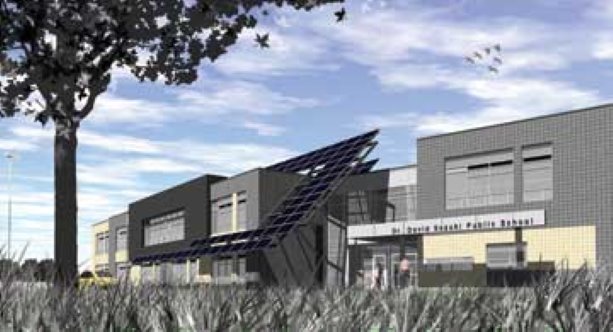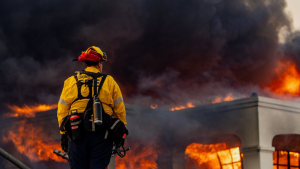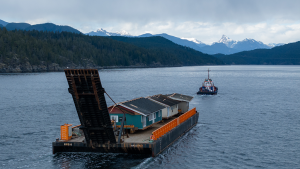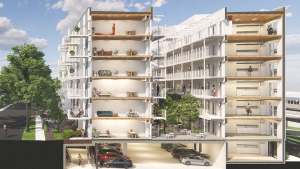When you’re designing a school named after famed Canadian environmentalist Dr. David Suzuki, you’d better ensure it’s as green in function as its namesake.
Green Building
When you’re designing a school named after famed Canadian environmentalist Dr. David Suzuki, you’d better ensure it’s as green in function as its namesake.
So it follows that the design team for the Dr. David Suzuki Public School in Windsor, Ontario is also striving to be the first LEED platinum educational institute in Canada.
Slated to open next year, it incorporates a host of green features not normally associated with schools such as green roofing, recycled grey water, solar and geothermal heating.
The school will also meet higher energy efficiency standards than required by the building code. The walls, for instance, will be rated at R-25.4.
The building will be clad in conventional architectural block. An air space behind the block will allow for moisture drainage and behind that a low-VOC polyurethane sprayed foam insulation will cover a <0x00BD>-inch exterior fiberglass reinforced gypsum sheathing.
Inside the interior wall cavity will be a three-inch layer of mineral wool insulation.
It is a sophisticated building envelope to go on a sophisticated building.
But studies show that not all LEED certified buildings place much emphasis on energy efficiency and the building envelope.
In fact, many non-LEED buildings constructed today are more energy efficient, said Laverne Dalgleish, principal of the Building Professionals Consortium (BPC).
“My personal opinion is that we’re concentrating so hard at how to get the (LEED) points that we’re not stepping back and asking ourselves, ‘What makes a good building?’,’’ he said.
A major player in the field of building envelopes in North America, Dalgleish’s Winnipeg-based firm was instrumental in the development of the EIFS Council of Canada’s quality assurance program.
There are four levels of LEED certification (Certified, Silver, Gold and Platinum).
To meet certification requirements, a developer must score a number of points, based on the sustainable design elements and construction methods.
Unfortunately, said Dalgleish, to meet a basic or Silver certification standard, the LEED program doesn’t emphasize energy efficiency.
But Greg McLean of McLean + Associates Architects, architect of record for the David Suzuki school, said to meet Gold and Platinum LEED standards, a design must meet higher energy efficiency standards.
Dalgleish, who develops quality assurance programs for construction sites and new standards for the construction industry, said that about five years ago (before LEED was introduced) school owners made concerted efforts to build durable, energy efficient, low-maintenance buildings.
“Now that LEED has come along, some of those common-sense types of things seem to have gone out the window,” he said.
He doesn’t blame the Canada Green Building Council, which oversees LEED, and just considers it growing pains.
“I think everybody is feeling the same way and more pressure is being put on the Council’s board to make some changes,” added Dalgleish.
“We have to place extra importance on energy efficiency over health-based paint, recycled glass for tile and those types of things.”
McLean is hopeful the David Suzuki school will raise the green bar for schools in Canada, but unless the cost of advanced technologies drops, the Windsor school might remain a rare breed.
“What I would think would be provided though for future schools is proper insulation, good windows, doors, light sensors and the kinds of things that aren’t cost-prohibitive but smart to do.”
Dalgleish said while big money is being spent by U.S. governments on retrofitting buildings to improve energy efficiency, a shortage of trained consultants and a scarcity of materials and supplies will likely occur over the next few years.
When it comes to public schools, B.C.’s provincial government is taking the retrofit market seriously.
Through its Building Envelope Program (BEP), up to 400 public schools built from 1985 on are being assessed for problems such as water ingress that is leading to premature building envelope failure.
To date 27 projects have been completed and another 16 projects are underway.
Dalgleish said he would be surprised if B.C.’s BEP doesn’t continue to reveal problems with some of the schools built in the 1980s and ’90s because their construction coincides with a construction boom that produced many poorly built condominiums.











Recent Comments
comments for this post are closed